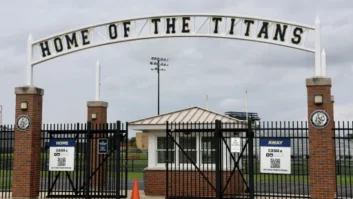
To celebrate the first transatlantic radio broadcast by members of its club 100 years ago, the Radio Club of America (RCA) will undertake a re-creation of the 1921 Transatlantic Test Project transmission on Dec. 12.
Using shortwave, low power and other state-of-the-art technology from the time, the signals the club broadcast in 1921 from Connecticut were heard in Scotland, the Netherlands, England, Germany, Puerto Rico, British Columbia, California and Washington state.
[See More of radio’s history in Roots of Radio.]
Back in 1921, the club said in an announcement about the event, transatlantic wireless was an arduous process done with 250 kilowatt transmitters and antenna superstructures. Ham radio operator Major E. Howard Armstrong, though, worked to secure a 10 foot × 14 foot wooden hut in a farmer’s field in Greenwich, Conn., with a transmitter with an input power of 900 watts. The signal was broadcast using a 100-foot-long and 70-foot-high T-cage antenna with a radial counterpoise at a wavelength of 230 meters.
The event was a watershed, the organization said. On Dec. 12, 2021, at 0252 UTC (9:52 p.m. EST) radio aficionados with a shortwave receiver or have access to an internet radio receiver can tune to 1825 kHz. The transmission will identify as W2RCA and repeat the 1921 Morse Code CW transmission at a speed of 12 wpm.
In addition to the Radio Club of America’s re-creation, The Vintage Radio and Communications Museum of Connecticut will use a replica of the 1BCG transmitter to transmit a similar one-way Morse Code message on 1820 kHz. The message will repeat every 15 minutes starting Dec. 11 at 2300 UTC (6 p.m. EST) through 0400 UTC (11 p.m.) on Dec. 12.
The American Radio Relay League and the Radio Society of Great Britain have assembled a list of other stations and groups organizing events and activities to celebrate 100 years of amateur radio transatlantic communication. Visit http://www.arrl.org/transatlantic and https://rsgb.org/transatlantic-tests respectively.







